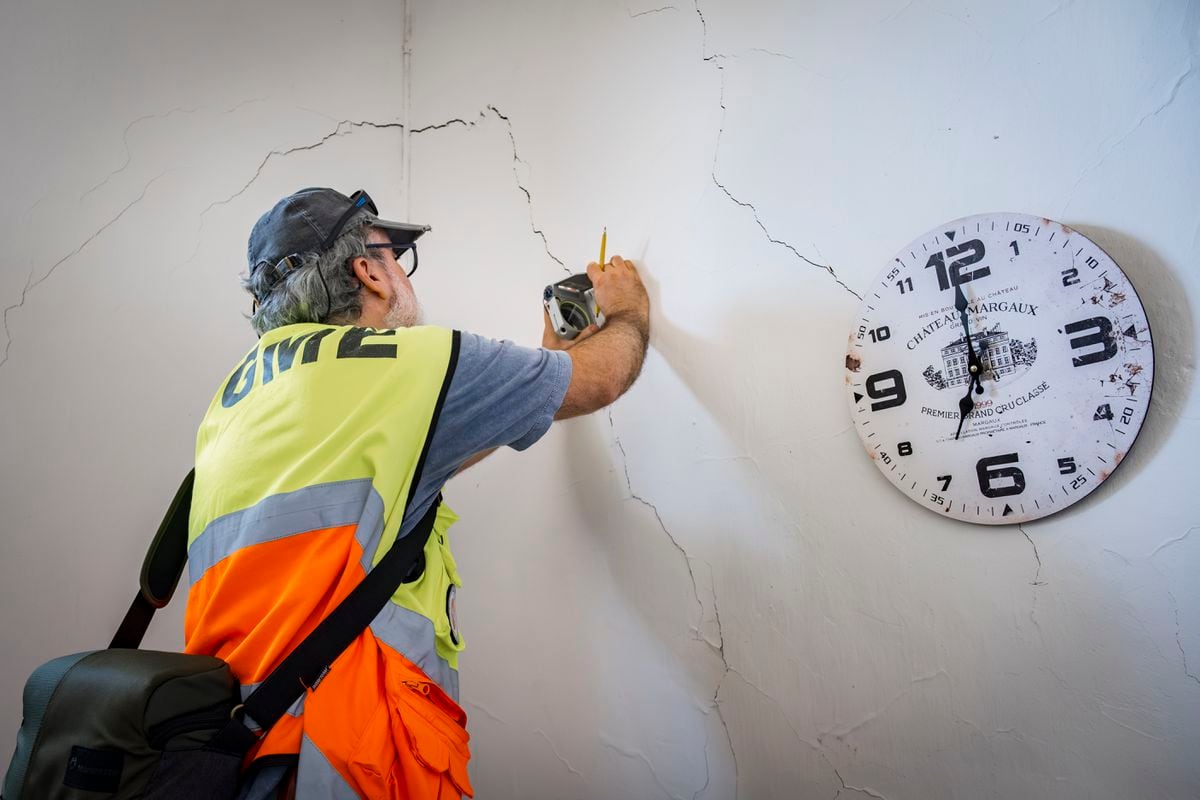The cloud of gases and ash that the La Palma volcano spits out to the rest of the Canary Islands and may reach the Iberian Peninsula with consequences that are not yet clear.
The gas of most concern is sulfur dioxide, as it can form sulfuric acid in contact with cloud water and precipitate in the form of acid rain.
Meteorologists are now struggling to understand the impact of the weather in the coming days and its interaction with the volcano's emissions.
Sulfur dioxide can reach the Iberian Peninsula between tomorrow and Friday, yes, with a much lower concentration than on the islands, as shown by the atmospheric monitoring model of the Copernicus satellite system of the European Union.
In another video of the model published by scientist Mark Parrington, two sulfur clouds can be seen, the one from the La Palma volcano and the one from Etna in Sicily, which will move to the east.
Progress towards the Mediterranean of the sulfur dioxide emitted by the volcano of La PalmaCOPERNICUS EU22 / 09 / 2021COPERNICUS EU / Europa Press
With the winds forecast at different heights for today and tomorrow “it cannot be ruled out” that acid rain will occur in the north and east of the most mountainous Canary Islands, the State Meteorological Agency (Aemet) has reported.
According to the agency's pollutant dispersion model, it is possible that sulfur dioxide emissions at 3,000 meters of altitude will move east or northeast this afternoon and tomorrow, reaching the north of Tenerife, although most of the gas will remain. in the eastern part of La Palma and on the Atlantic Ocean.
At 1,500 meters of altitude, the trend is for these emissions to reach El Hierro, La Gomera and Tenerife between today and tomorrow.
The gas cloud is expected to continue its journey towards the Mediterranean, but the model does not indicate a “significant” arrival of emissions to the Iberian Peninsula today or tomorrow, according to the Agency.
More volcanic sulfur dioxide over Europe in the @CopernicusECMWF Atmosphere Monitoring Service @ECMWF forecast from 21 Sept 12 UTC with emissions from # CumbreVieja🇮🇨🇪🇸 & # Etna🇮🇹 🌋 visualized by @Windycom https://t.co/KuHWX1fpq5.
Total column SO2 with assumed injection ~ 5km pic.twitter.com/XtmwcWFznG
- Mark Parrington (@m_parrington) September 22, 2021
David Suárez, spokesperson for Aemet in the Canary Islands, explains that the impact of gases and possible acid rain in the Canary Islands is "minimal" and that it is much lower in the rest of Spain. “The sulfur cloud from the volcano is injected into the atmosphere at a height of 3,000 meters. On the islands, the precipitations of these last days and those that we expect for the next 48 hours are low clouds, so it is very unlikely, even discarded, that sulfur dioxide will come into contact with them and can produce acid rain. In any case, it only causes damage to crops and vegetation when it is persistent, for example due to the presence of thermal power plants or volcanoes in continuous eruption. A rain like the one that could occur in the Canary Islands today or tomorrow would have no impact ”, he details.
The expert clarifies that the Copernicus data show the concentrations in a column of air that extends from the surface to 5,000 meters high.
That is why the real impact of that cloud on people and the environment is much less alarming than it may seem.
At the moment the concentration of sulfur dioxide on the surface in the Canary Islands and the Peninsula is low and within healthy limits and the satellites predict that these levels will remain the same or lower in the coming days.
The latest calculation indicates that the volcano emits between 6,000 and 11,000 tons of sulfur dioxide a day, explains Suárez.
The first analysis that is expected in the next few hours will indicate whether the concentration of this gas that reaches the Peninsula would be enough to cause acid rain.
The Agency is also monitoring the emission of ash, which can shut down aircraft engines in flight.
At the moment no concentrations of these particles have been detected that force air transport to be diverted on La Palma for the next few hours, explains Suárez.
Yesterday, a meteorological station located at an altitude of 2,371 meters in Izaña in Tenerife detected the arrival of sulfur dioxide from the eruption.
It registered peaks of up to 20 parts per billion, about 400 times the normal level for the area.
But even this concentration does not pose a risk to health, as it is a specific measure and is also within the ranges considered healthy, according to Aemet.
"We are by no means in a dangerous scenario," highlights Sergio Rodríguez, an expert in atmospheric sciences at the CSIC. "Most of the sulfur dioxide is in the middle and upper layers of the atmosphere, so the movement of the clouds from their origin to the other islands and possibly the Peninsula presents few risks", highlights the researcher. In the middle and upper layers, the cloud of ash and gases from the volcano would not produce acid rain, but would form aerosols [very small particles] that can reflect sunlight and therefore generate a cooling of the atmosphere, the researcher details. . In very powerful eruptions these particles can cause no summer, as happened with the Tambora in 1816.
Rodríguez studies the aerosols that the volcano spits out.
“Right now there is a cocktail of particles with volcanic ash and others from fires caused by lava.
We want to understand what concentration there is in the El Paso area, where a new mouth has been opened.
In general, we know that the effect of these particles on health is similar to that of air pollution in cities, which increases the risk of heart disease and worsens asthma or COPD ”, he highlights.
You can follow MATERIA on
,
and
, or sign up here to receive
our weekly newsletter
.







/cloudfront-eu-central-1.images.arcpublishing.com/prisa/S7EEXKSOAFNC5GML424T7A7DFY.jpg)



/cloudfront-eu-central-1.images.arcpublishing.com/prisa/KMEYMJKESBAZBE4MRBAM4TGHIQ.jpg)


/cloudfront-eu-central-1.images.arcpublishing.com/prisa/EXJQILQR5QI7OMVRTERD7AEZAU.jpg)
